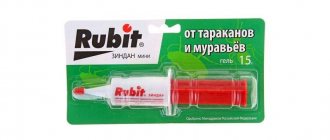Historical facts
For the first time, rosemary, like many other medicinal or spicy plants, became known in Ancient Egypt, Rome and Greece. It was also one of many sacred plants. It was very often used in various historical or religious rituals; with its help, evil spirits were expelled from homes. It was believed that the Greek gods decorated themselves with wreaths of blooming rosemary and simply adored this plant. That is why the Greeks very often did the same thing: they wove wreaths from a flowering plant or its greenery and decorated their heads with them. This was especially popular among philosophers and writers: it was believed that such a wreath could refresh the mind and inspire new ideas.
In addition, it is considered a symbol of prosperity and abundance, so it is very often used to attract good luck and is given to newlyweds so that the family is strong and the house is full.
The Greeks considered rosemary to be a plant of Venus, since, in their opinion, it was able to make a person happy, cheerful and carefree, as well as inspire deeds of love. In addition, it was used as a remedy against bad dreams and to prolong the freshness of youth of the soul and body.
Rosemary was a must-have plant in the home of a person who was ill, as it was believed to tonify the body. For the sake of preventing various diseases, it has become a mandatory attribute of large gatherings of people, for example during holidays or public processions. This opinion is absolutely fair, because rosemary contains substances that prevent the development of pathogenic bacteria in the body.
What it is
Rosemary is an herb with small grey-green leaves that look like Christmas tree needles and a bittersweet, lemony, slightly pine-like aroma, used as a seasoning both fresh and dried.
The leaves and stems of the plant have long been used for cooking and medicinal purposes.
What does rosemary look like - photo
Take a look at the photo of rosemary; in appearance and smell, this spice resembles a coniferous plant, although in fact it is a relative of mint.
Plant properties
Rosemary contains camphor, eucalyptus oil, as well as verbenone and borneol. It is thanks to them that it has such a rich aroma, and the bitter taste is the merit of carnosol and rosmarinic acid.
As for medicinal purposes, young shoots or leaves of the plant are used for this. Most often they are collected during flowering, but sometimes before that. The medicinal properties of rosemary have been known for a very long time: it can stimulate the immune system, fight inflammation and have a general tonic effect on the body. It has the ability to help people fight depression, heal wounds and remove toxins.
Rosemary is recommended for use by those who are experiencing mental or physical exhaustion, people with low blood pressure, and is also considered an excellent remedy for increasing libido. Even diseases such as rheumatism or radiculitis can be treated with rosemary by taking a bath with the addition of this plant.
Rosemary is used as a sedative, including to improve memory, so it was very often and very actively used in the past by students and schoolchildren in order to stimulate their mental activity and calm down before an exam.
In addition, rosemary helps to relax and lift your mood. The best way to do this is to add a few drops of oil to the bath. Chemical composition of rosemary (per 100 g)
| Calorie content | 131 kcal |
| Squirrels | 3.31 g |
| Fats | 5.86 g |
| Carbohydrates | 20.7 g |
| Alimentary fiber | 14.1 g |
| Water | 67.77 g |
| Ash | 2.35 g |
| Vitamins | |
| Vitamin A | 900 mcg |
| Vitamin B1 | 0.036 mg |
| Vitamin B2 | 0.152 mg |
| Vitamin B5 | 0.8 mg |
| Vitamin B6 | 0.336 mg |
| Vitamin B9 | 109 mcg |
| Vitamin C | 21.8 mg |
| Vitamin PP | 0.912 mg |
| Macronutrients | |
| Potassium | 668 mg |
| Calcium | 317 mg |
| Magnesium | 91 mg |
| Sodium | 26 mg |
| Phosphorus | 66 mg |
| Microelements | |
| Iron | 6.65 mg |
| Manganese | 0.96 mg |
| Copper | 301 mcg |
| Zinc | 0.93 mg |
Chemical composition
Rosemary is rich in the following substances:
- rosemary essential oil (up to 2%);
- tannins (up to 8%);
- alkaloids – rosemaricin;
- flavonoids – luteolin, apigenin;
- triterpenes, phenolic diterpenes – antioxidants carnosol and carnosolic acid;
- vegetable resins;
- acids – ursolic, rosmarinic, caffeic, chlorogenic;
- amino acids – valine, lysine, tryptophan;
- fatty acids – oleic, linoleic, palmitic;
- vitamins of group B, A, C, K;
- micro- and macroelements - calcium, potassium, phosphorus, iron, zinc, selenium and others.
Rosemary oil
Rosemary oil can be easily made at home if you can't buy it or don't want to. To make rosemary oil, take several whole branches of the plant and place in a glass container with cool olive oil. This oil must be placed in the sun so that the plant releases maximum of its beneficial substances. Keep it in this state for 6 weeks, then strain it very carefully, pour it into a glass container, close it carefully and store it in a cool, dark place.
In addition, essential oil is obtained from rosemary in a much more complex way, which is best used for massage for pain in muscles or joints. In addition, rosemary essential oil is often used to treat various diseases of the upper respiratory tract. It has also proven effective as a cleanser for the liver or kidneys.
In addition, the essential oil can significantly enhance the sense of smell and hearing, and is often used to help with vision problems. People who are tormented by bad dreams, or who cannot sleep due to constant stress, or suffer from constant headaches, can also be saved by essential oil. To do this, you need to apply it to your temples with light massage movements before bed if you have insomnia, or at any time of the day for a general tonic effect and relief from headaches. This oil itself, when used regularly (even externally), due to its aroma, can increase performance, concentration and improve memory.
If you use rosemary essential oil, be sure to dilute it with another natural, neutral oil, such as flaxseed. The fact is that a high concentration of essential oil can cause burning of the skin.
Contraindications to the use of spices
The seasoning has contraindications for use:
- Hypertension. It has a stimulating effect on muscle tone, which leads to pressure surges.
- Epilepsy. May provoke seizures due to stimulant effects.
- Age up to 5 years. Possible sleep disturbances, insomnia and increased excitability.
During pregnancy, excessive intake can contribute to miscarriages by increasing uterine tone.
When breastfeeding, the seasoning is contraindicated - it stops lactation and can cause convulsions in the child.
Watch Elena Malysheva’s program about the benefits of seasoning:
Use of rosemary in medicine
Special medical ointments are made based on rosemary, which are famous for their good ability to overcome problems such as radiculitis. Also, for radiculitis, it is very useful to use baths with the addition of rosemary sprigs, which will not only help with radiculitis, but also generally increase blood circulation, raise blood pressure, help relieve fatigue and get rid of stress.
Very often, rosemary is also used to treat the female reproductive system. Doctors recommend using rosemary during menopause to make it easier, as well as if a woman has irregular menstrual cycles. Sometimes it is taken even during pregnancy to reduce irritability associated with hormonal changes, as well as to minimize the manifestations of toxicosis. However, during pregnancy this should be done carefully and after consulting with your doctor.
Where to buy and how to choose
Dried rosemary is often found in the spice section of the grocery store. Fresh can be found with other herbs in the produce department.
It's easy to grow rosemary right on your windowsill.
If you are choosing between dried and fresh rosemary at the store, take the second option. Fresh is superior to dry in quality and has a more subtle aroma. Dried has a sharp and rather pungent taste.
Fresh rosemary sprigs should be deep green in color, without any blemishes or wilt.
Rosemary recipes for treatment and prevention
An infusion of leaves helps with various respiratory diseases. To do this, you need to take it orally 3-4 times a day. It is no less useful during a cold: you can use it to improve your condition if you gargle or use it to rinse your nose.
An infusion of dried rosemary is often used as an effective remedy for flatulence and various problems with the gastrointestinal tract. In addition, doctors recommend taking a weak infusion to people who have suffered a stroke, as this plant can restore blood circulation in the brain.
Rosemary decoction
Take two teaspoons of dried leaves, add 250 ml of boiling water to them and boil the resulting mixture for 15-20 minutes. Then let cool slightly and strain thoroughly. The resulting mixture should be consumed one teaspoon half an hour before meals.
Alcohol tincture
For 250 ml of vodka or diluted alcohol you need to take 20 grams of dried leaves, infuse the resulting mixture in a dark, cool place for 10 days, stirring occasionally. Then strain thoroughly and store in a dark place. Drink 25 drops 3 times a day half an hour before meals, adding to a small amount of water.
Rosemary infusion
Add 2 teaspoons of crushed raw materials to 250 ml of boiling water, leave for half an hour and strain thoroughly. The resulting mixture must be drunk in one day, in about 5 doses.
Rosemary tea
To do this, add about one teaspoon of dry rosemary to one mug of boiling water and let it brew thoroughly. This tea will help with weakness, stress or after illness. A few glasses a day are enough to make you feel much better and more energetic.
general description
Rosemary (botanical name Rosmarinus officinalis) belongs to the genus of perennial evergreen shrubs of the Lamiaceae family. It is native to the Mediterranean, where it typically grows near the ocean, and its Latin name, ros marinus, translates to “dew of the sea.”
Some plants grow to 180m or more in height, but standard varieties are usually around 90cm.
Rosemary flowers are pale to bright blue.
When fresh, the color of the leaves is grayish-green above and silvery-whitish below. When dry, grayish-greenish, darker on top.
Dried rosemary is brought to us from Spain, France and Morocco. However, rosemary is also grown in temperate climates.
Rosemary in cooking
Best materials of the month
- Coronaviruses: SARS-CoV-2 (COVID-19)
- Antibiotics for the prevention and treatment of COVID-19: how effective are they?
- The most common "office" diseases
- Does vodka kill coronavirus?
- How to stay alive on our roads?
Rosemary is very often used in cooking as a spice. The leaves are used for this, and the plant gained the greatest popularity as a spice in France: there they make vinegar from it to add to various dishes, and also add the leaves to meat. This helps to highlight the taste of the meat and give it completely new notes, because the leaves have a fresh aroma and a slightly bitter taste, and they can also kill the specific smell of some types of meat, such as lamb. It is very actively used in cooking during meat processing, including because it does not lose its properties and pleasant aroma even after heat treatment, so it can be added to a dish during stewing or frying. If you like the aroma and taste of rosemary, you can try adding it not only to meat products, but also to cheese, and in small quantities you can even add it to some desserts to diversify their taste.
If you like rosemary, but not in the strong flavor that it contains on its own, you can try adding it to a neutral vegetable oil or salts, so they will take on the rosemary flavor, but in a not too strong form. Rosemary is not recommended to be added to fish, as it can overpower its delicate taste with its aroma. The same applies to sauces or marinades with a delicate taste: in this case, it is better to give preference to either salt with rosemary, or avoid it altogether.
Seasoning process
Fresh leaves are eaten, but they do not last long. Therefore, the seasoning became more widespread. To prepare it, the collected bunches of plants are first dried. They are hung in a dry and ventilated area, out of direct sunlight. The leaves need to be dried for 3-5 days. This process can be speeded up by using a dryer.
The plant bundles are then placed in sealed bags to prevent moisture and air from entering. They are ground and sorted until the leaves are separated from the branches. After this, the plant is crushed and transferred to moisture-protected packaging. Sometimes dried leaves are mixed with salt to make the seasoning more convenient to use during cooking.
The use of rosemary in cosmetology
The plant itself is used to combat excess weight; it is also considered an excellent means of combating cellulite. Rosemary has a very good effect on the skin, smoothing it out, stimulating blood flow to the epidermis and providing a rejuvenating effect. Facial toners are often made from rosemary. If you use them regularly, a pronounced effect will be noticeable. Very often in cosmetology, essential oil of the plant is used, which can fight inflammation and skin rashes due to its ability to prevent the development of bacteria. That is why it is actively used to treat problems such as acne, abscesses or small wounds that have become infected.
Rosemary is also used for hair, usually the oil extracted from it. Thanks to its ability to stimulate blood circulation, it helps strengthen hair and stimulate its growth, and is also an excellent way to combat dandruff.
Rosemary oil is used in cosmetology, as it can have an anti-inflammatory effect and helps cope with skin rashes, and also significantly improves skin condition, tightens pores and removes fine wrinkles. With regular use of essential oil, it stimulates skin regeneration processes, significantly improving its condition and appearance.











